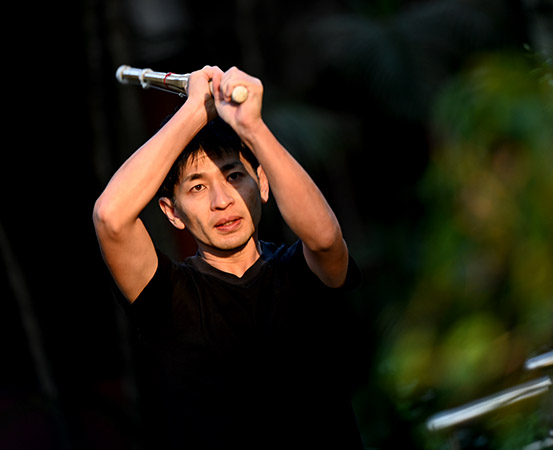
Kendo (ken = sword, do = the way) is a martial art form steeped in tradition, linked to the samurai culture of Japan. The practitioners use shinai (swords made of bamboo) to train in the various aspects of the art. It requires a high level of mental and physical strength, agility and precision.
“It is said to have originated in the mid-Heian period (794-1185), when Japanese swords were invented,” says Yasuhiro Nishijima, a kendo practitioner from Japan, currently based in Bengaluru, India.
“The equipment was crafted around the year 1800 and from 1912, various schools for kendo were put together putting the art form in its current state,” adds Nishijima.
Kendo was developed as a way for samurai (warrior class of premodern Japan) to hone their swordsmanship in a safe and controlled environment. The students, however, not only learn the way of the sword, but also about the history and culture of Japan, making it a truly cultural journey.
“In Japan, you can learn kendo by going to a dojo and practicing, but it is difficult in India,” says Nishijima. “If you can find an acquaintance who is experienced in kendo and has the tools, you can train to swing a shinai and practice striking.”
It has evolved into a competitive sport as well. However, the ideals of respect, discipline and self-improvement govern the art despite its competitive spirit. Practitioners adhere to a strict code of conduct and etiquette that rules their behaviour on and off the training mat.
Around 1.66 million people in Japan practice kendo. It has a global community of practitioners as well, and there are many international tournaments where the best practitioners of the art convene to test themselves against others, besides sharing knowledge.
Keiko: kendo sparring
At the heart of kendo is the practice of sparring, which is known as keiko. During a typical sparring session, two practitioners wear full protective gear – a helmet, chest protector and gloves. They use shinai to strike at specific targets on their opponent’s body to score points using the correct form and technique.
The targets include the head, wrists, torso and throat. Each target is assigned specific points and the first person to reach a predetermined number of points wins the duel.
Practitioners also engage in kata, which are prearranged forms of movements and attacks designed to inculcate the technique, timing and distancing necessary to effectively execute a strike.
Kendo training also includes a variety of exercises designed to develop specific skills and techniques.
“During training, which is rigorous, the body is trained especially for agility and kinetic vision [ability to identify moving objects], but that is no different from other sports,” says Nishijima. “However, the important thing is to acquire bushido [the way of the warrior]. It is a moral code concerning samurai attitudes, behaviour and lifestyle, which is acquired through rigorous training.”

Building character with the sword
Kendo emphasies discipline and the development of good character. The practice requires strict adherence to rules, protocols, and tradition of the sport. “It emphasises respect for the other individual’s personality,” says Nishijima. “Ippon [the highest score a fighter can achieve at a match] can be withdrawn or taken away from someone if he/she even makes a fist pump.”
Kendo trains a person to control emotions and maintain a calm and focused state of mind, even in the face of adversity.
The physical and mental demands of kendo can help individuals to develop discipline in their personal and professional lives by teaching them self-control, focus and the importance of following rules and regulations.
“For me, training is painful, hot in the summer and cold in the winter,” adds Nishijima. “However, I feel that I can be kind to others by knowing suffering. I think it’s important to understand the pain and suffering of others.”
Whether you are a seasoned practitioner or a curious newcomer, kendo offers a unique and rewarding experience that can enrich your life in countless ways.
Takeaways
- Kendo, the way of the sword, requires a stellar level of mental and physical strength, agility, and precision.
- The Japanese martial art form was developed as a way for samurai to hone their swordsmanship in a safe and controlled environment.
- The ultimate goal of a kendo practitioner is to attain bushido through rigorous training.
- The shinai (bamboo sword) promotes sportsmanship, humility and perseverance, which further reinforces positive character traits and helps individuals to cultivate discipline in all aspects of their lives.
















